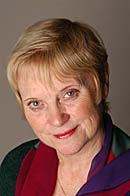With the cost of international travel to meetings and conferences becoming increasingly prohibitive and the workplace inexorably becoming wherever you power up your laptop, this is the moment to get your on-screen interactions well and truly taped. And as it happens masking tape and a full length mirror are all you need to get started.
First, observe yourself from head to toe in a full length mirror as you move and gesture in ways that seem normal to you while delivering a real presentation to an imaginary audience. Switch yourself on as soon as your imaginary camera is switched on and make sure you stay 'on' until that camera is switched off.
Make notes on your performance and try again incorporating any changes you decided to make in your next solitary rehearsal .
Now use the masking tape to create a frame on the mirror so that you can only be seen from the waist up. Repeat what you did before but note the difference the screen edges make to your view of yourself and your performance.
Go through the same process sitting behind a table. Move the height of your masking tape frame if necessary again making changes for the better based on your observations.
The next stage is to practise energetic listening by acting out how you'd behave if you had to be silent but attentive for long periods. Any tendency to day dream becomes immediately obvious on screen because it blanks out the light in the eyes - so sit upright on the edge of your seat; maintain a lively face and consciously breathe out from time to time to allow room for fresh air to rush in, cool and oxygenize your brain and keep you alert.
Test your powers of concentration by recording yourself speaking for ten minutes about a topic or product that really interests you. Play back that talk and concentrate on what you are saying. The moment you find your attention wandering - check the time. … !!
If you couldn't stay interested in yourself for ten minutes, what chance will other guys have of doing so, especially if they are not as conversant with English as you are?
Hopefully by the time you've done a dozen or so mirrored and taped practise sessions, you'll have located a video camera and microphone and some distant colleagues to practise with so you can begin work on the medium proper and assess real audience reaction? If you can see everyone involved on screen there should be few problems. . But if you are to be the respondent for a question and answer session for conference delegates half way round the world, you'll often only get to see the person asking the questions. A much larger, unseen audience is likely to be there and attending to every word and to every facial expressions up close and on a very large screen.
Get In close to your framed mirror again to give yourself some idea of what they're likely to see. Answer some hypothetical questions while you're up close. Any facial expressions that get on your nerves are sure to bug an audience!
If you're on screen for real and an audience laughs and you can't determine why, ask the person you can see to let you in on the joke. Seizing the initiative like that puts you in a position of advantage.
Some things that will definitely not put you at an advantage are clothes made from striped or check material as they cause screens to strobe. Hair covering your eyes and flopping around your face is unnecessarily distracting as are hands waving in front of your face.
Resting your chin on your hands will muffle your voice. Overly casual behaviour such as feet up on a desk is a no-no. Swearing is unproductive. Filler words or sounds such as: you know; well; like; sort of; whatever; uhmm, aahh, mmmh should be kept to a minimum
If a conference or meeting you have to attend is taking place in the middle of your night - especially if you're going to be alone in a room with only a video camera for company - it's best to be in situ and thinking about the matter in hand at least half an hour before the meeting begins otherwise you will take far too long to warm to your topic.
The scheduling of international meetings is always problematic for someone. Ideally they should be timetabled to fit the time zone of the majority but most often they are planned to fit the comfort zone of the most important participant or participating organization.
Hopefully a clear agenda will have been sent out well in advance and participants will stick to it. But more often than not you'll find yourself having to busk it. Make sure, therefore, that points you really want to get across are in front of you and can be succinctly stated. (Teleprompts or story boards can be life-savers)
It often happens that people who were the obvious choice to be chairpersons or discussants off-screen lack a sufficiently ingratiating presence to do the job well on-screen. To save face for such colleagues and give them time to acquire the skills they need to get their bottoms back in those chairs a wise organisation will engage an informed and skilled facilitator to front initial on screen meetings.
As it becomes increasingly in the interests of organizations the world over to make on screen meetings work, it is beyond the power of one article to address the needs of all. That there are many other ways to help make this medium more vital and productive is certain.
It is also certain that if those of you with successful methods of working on screen would share them via Management-Issues the opportunity your generosity would open up for fellow managers to evolve a screen presence with lively ease would enrich communication for us all.
